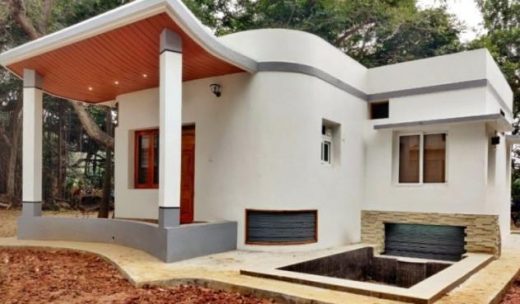Introduction:
3D printing AKA additive manufacturing uses computer-aided designing to make prototypes or working models of objects by laying down successive layers of materials. In 3D construction printing (3DCP) process, the printing method is used to fabricate buildings or different construction components. The 3D printing technology is now a popular concept in recent years with many new companies. The technology uses different approaches using industrial robots, gantry systems and autonomous vehicles for fabrication of on-site and off-site fabrication of buildings. It includes fabrication of housing, construction components like cladding and structural panels and columns, bridges and civil infrastructures, follies and sculptures.
Concrete 3D printing is an automated manufacturing method that constructs three-dimensional real-life structures at all realizable scales. The design is fabricated into
- A 3D structure layer by layer
- Using a special type of concrete specifically designed for the purpose. The concrete is a base of ordinary cement with a lower water-cement ratio.
The concrete is deposited, joined, or solidified to create a three-dimensional object. The process is monitored by computer control. This concrete may consist of materials such as plastics, liquids, or powdered grains.
Recently IIT-Madras Alumni built India’s first 3D printed house within 5 days. Chennai-based Tvasta Manufacturing Solutions built India’s first 3D printed house on a concept former IIT-M students. The company collaborated with Habitat for Humanity’s Terwilliger Centre for Innovation in Shelter for the project to develop India’s first 3D printed house. Tvasta Manufacturing Company was set up as part of the new incubator –ASHA Incubator-of the Ministry of Housing and Urban Affairs at IIT Madras. The 3D printed house was inaugurated virtually by Union Finance Minister Nirmala Sitharaman. The 3D printed house consists of a single storey with functional space of about 600 square feet which comprises a single bedroom, hall, and a kitchen. It took just 5 days to complete the house.

Fig: India’s first 3D printed house
Construction Process:
The 3D printed house is quicker than conventional construction. At the starting of the project, structure was printed using a special concrete mix through which a large 3D structure was made. The concrete mix has a lower water-cement ratio. The manufacturing company has developed their own material mix of an extrudable concrete consisting of cement, sand, geopolymers and fibers. The final mix was made by mixing the components in a large hopper. During 3D printing, the structure was specifically designed hollow which allowed provisions for wiring and plumbing without damaging the wall.
3D printed houses are both economical and also environment-friendly. The use of local materials in this technology eliminates the need to transport concrete over long distances.it is said that a standard 3D printer can produce a 2000 sq-ft home in less than a week, which is 18
th of the total time spent today to erect a functional house. This technology creates only 13 rd of the waste generated using conventional building methods.
Advantages of Concrete 3D Printing:
1. It helps to reduce carbon footprints with eco-friendly raw materials.
2. It produces sustainable and green buildings as it uses industrial waste and recycled material
as raw materials.
3. It minimizes the cost of construction by around 30% when compared to the conventional
mode of construction.
4. The technology uses ‘ready to implement methodology’ which requires no lead time for
manufacturing, thus significantly reducing construction time.
5. The building constructed is of higher quality and has a long life exceeding 50 years.
Disadvantages of 3D printing
1. 3D printing technique uses 100 times more power than the conventional methods leading to
detrimental environmental impacts.2. Cost of a 3D printer is very expensive.
3. Materials used in 3D printing are scarce.
4. Three-Dimensional Printing is slow when it comes to Mass Customization.
5. Printer uses harmful chemicals such as styrene and caprolactam due to which ultrafine
materials are emitted which may settle in a person’s bloodstream.
6. It releases too much plastic by-products.
7. It is not user-friendly.
Scope:
The company is planning to expand this technology to all sections of the construction industry, including affordable housing and large-scale infrastructure building. Nirmala Sitharaman, while inaugurating the house said that through this India will be able to achieve the PM’s goal of ‘Housing for all by 2022’ by constructing 100 million houses within 2022. Tvastsa has indigenous methodologies in design and construction, which would provide fuel to India’s Atma Nirbhar Bharat Vision. It would help to showcase India and its abilities to the world. It can be used in various fields like additive manufacturing of food, manufacturing cars, trucks, medical devices, health organs, and in almost every field.
If you have a query, you can ask a question here.


